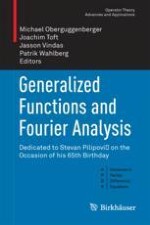This book gives an excellent and up-to-date overview on the convergence and joint progress in the fields of Generalized Functions and Fourier Analysis, notably in the core disciplines of pseudodifferential operators, microlocal analysis and time-frequency analysis. The volume is a collection of chapters addressing these fields, their interaction, their unifying concepts and their applications and is based on scientific activities related to the International Association for Generalized Functions (IAGF) and the ISAAC interest groups on Pseudo-Differential Operators (IGPDO) and on Generalized Functions (IGGF), notably on the longstanding collaboration of these groups within ISAAC.
